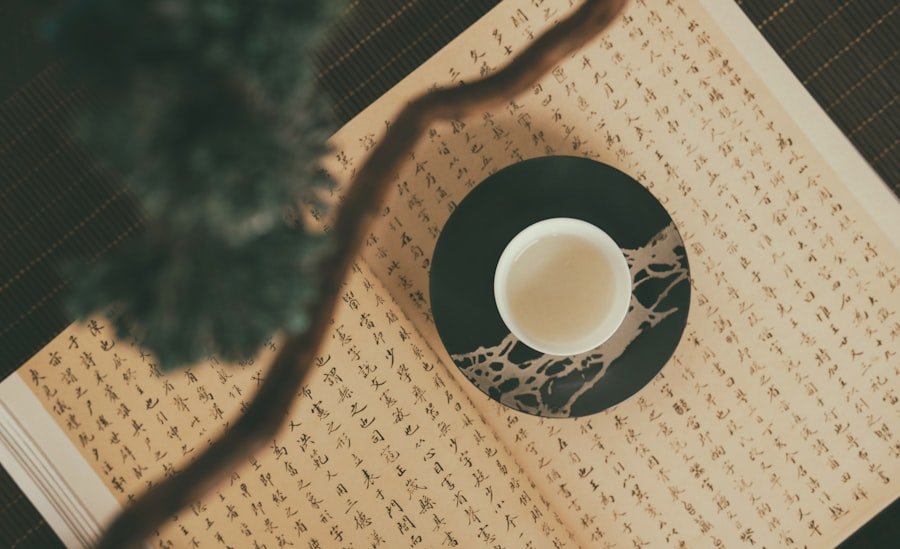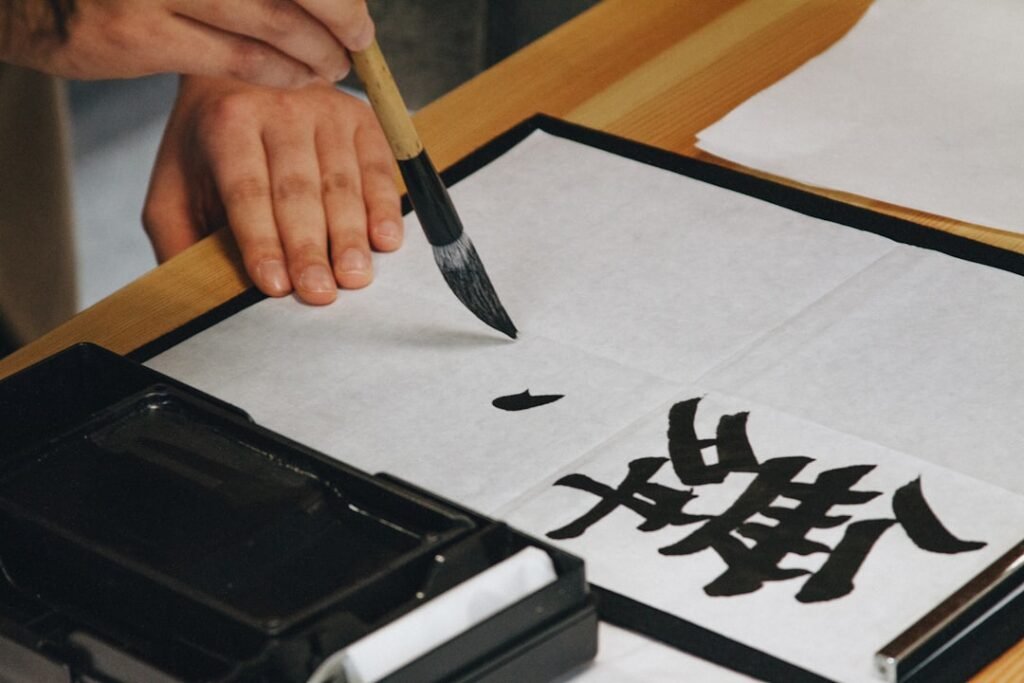Selecting the ideal location for your calligraphy space is a crucial first step in nurturing your artistic practice. The environment in which you create can significantly influence your focus and creativity. Ideally, you should choose a spot that is quiet and free from distractions, allowing you to immerse yourself fully in the art of calligraphy.
A corner of your home that receives minimal foot traffic can serve as an excellent sanctuary for your creative endeavours. Consider spaces such as a spare room, a nook by a window, or even a well-organised corner of your living room. Moreover, the location should be conducive to your artistic needs.
If you prefer natural light, positioning your workspace near a window can enhance your experience, providing both illumination and inspiration from the outside world. Alternatively, if you find solace in solitude, a more secluded area may be preferable. The key is to ensure that your chosen location resonates with your personal style and fosters an atmosphere where you can explore the delicate strokes and intricate forms of calligraphy without interruption. Master the art of Chinese calligraphy. Enroll now at the LC Chinese School in Oslo.
Table of Contents
ToggleSummary
- Choose a quiet and well-lit location for your calligraphy space to avoid distractions and ensure good visibility.
- Invest in high-quality calligraphy tools such as nibs, ink, paper, and holders to achieve the best results in your work.
- Keep your workspace organised with designated areas for tools, materials, and finished pieces to maximise efficiency.
- Create a calming atmosphere with soft lighting, soothing colours, and inspirational artwork to enhance your creativity.
- Incorporate traditional Chinese decor and artwork to connect with the cultural roots of calligraphy and find inspiration.
Selecting the Essential Calligraphy Tools and Materials
Once you have established the perfect location for your calligraphy space, the next step is to gather the essential tools and materials that will aid in your artistic journey. Calligraphy is an art form that requires specific implements, each contributing to the overall quality of your work. A good quality calligraphy pen or brush is paramount; these tools come in various sizes and shapes, allowing for different styles and techniques.
Additionally, consider investing in a variety of inks and papers, as these elements can dramatically affect the final outcome of your pieces. Beyond the basics, it is also beneficial to explore supplementary tools that can enhance your practice. For instance, a ruler and a pencil can help you create guidelines for your lettering, ensuring precision and consistency.
Furthermore, having a selection of practice sheets or templates can provide structure as you hone your skills. By carefully curating your collection of tools and materials, you will be well-equipped to embark on your calligraphic journey with confidence and creativity.
Organising Your Calligraphy Workspace for Efficiency

An organised workspace is essential for fostering creativity and efficiency in your calligraphy practice. When everything has its designated place, you can easily access the tools and materials you need without wasting time searching for them. Start by categorising your supplies; for example, keep all pens and brushes together in a holder or drawer, while inks can be stored in a separate container.
This method not only streamlines your workflow but also allows you to quickly identify when supplies are running low. In addition to categorisation, consider the layout of your workspace. Position frequently used items within arm’s reach to minimise disruption during your creative process.
A clutter-free desk will enable you to focus on your work rather than being distracted by disorganisation. By taking the time to organise your calligraphy space thoughtfully, you will create an environment that encourages productivity and inspires artistic exploration.
Creating a Calming and Inspirational Atmosphere
The atmosphere of your calligraphy space plays a significant role in shaping your creative experience. A calming environment can help reduce stress and promote concentration, allowing you to delve deeper into the art of calligraphy. To achieve this, consider incorporating elements that evoke tranquillity, such as soft colours, natural materials, and soothing scents.
A gentle colour palette can create a serene backdrop for your work, while wooden furniture or bamboo accents can add an organic touch. Inspiration is equally important in nurturing creativity. Surrounding yourself with artwork or quotes that resonate with you can serve as a constant reminder of your artistic goals.
Consider displaying pieces that reflect traditional Chinese calligraphy or other forms of art that inspire you. By blending calming elements with sources of inspiration, you will cultivate an environment that nurtures both relaxation and creativity.
Incorporating Traditional Chinese Decor and Artwork
As you delve into the world of calligraphy, embracing traditional Chinese decor can enrich your artistic experience and deepen your connection to this ancient art form. Incorporating elements such as Chinese scrolls, ink stones, or decorative fans can create an authentic atmosphere that pays homage to the rich history of calligraphy. These items not only serve as beautiful decor but also as reminders of the cultural significance behind the art.
Additionally, consider displaying your own calligraphic works within this decor. Framing completed pieces or hanging practice sheets can create a gallery-like feel in your workspace, showcasing your progress and achievements over time. By surrounding yourself with traditional Chinese decor and personal artwork, you will foster a sense of pride in your craft while immersing yourself in the cultural heritage that inspires it.
Utilising Natural Light and Proper Lighting

Lighting is a critical aspect of any creative workspace, particularly in calligraphy where precision is paramount. Natural light is often considered the best option for artists, as it provides an even illumination that allows for accurate colour representation and detail work. If possible, position your workspace near a window to take advantage of daylight during the hours when it is most abundant.
This not only enhances visibility but also connects you with the outside world, which can be invigorating for creativity. However, it is essential to consider lighting options for evenings or cloudy days when natural light may be insufficient. Invest in adjustable task lighting that can be directed towards your workspace without causing harsh shadows or glare on your paper.
Soft white bulbs are ideal as they mimic natural light and create a warm atmosphere conducive to creativity. By thoughtfully utilising both natural light and artificial lighting solutions, you will ensure that your calligraphy space remains functional and inviting at all times.
Establishing a Comfortable Seating Arrangement
Comfort is paramount when it comes to creating an effective calligraphy space. The hours spent honing your skills can take a toll on your body if you do not have an ergonomic seating arrangement. Invest in a chair that provides adequate support for your back while allowing freedom of movement as you write.
A chair with adjustable height features can also help ensure that you maintain proper posture while working at your desk. In addition to chair comfort, consider the height of your writing surface. Your desk should be at a level that allows for relaxed arm positioning while writing; this will help prevent strain during long sessions of practice.
By prioritising comfort in your seating arrangement, you will create an environment where you can focus on perfecting your calligraphy without physical discomfort distracting you from your artistic pursuits.
Maintaining a Clean and Clutter-Free Environment
A clean workspace is essential for fostering creativity and maintaining focus during your calligraphy practice. Clutter can lead to distractions and hinder productivity; therefore, establishing a routine for tidying up is vital. After each session, take a few moments to put away tools and materials that are no longer in use.
This simple habit will help keep your workspace organised and ready for future projects. In addition to regular tidying, consider implementing deeper cleaning practices on a weekly basis. Dusting surfaces, wiping down tools, and ensuring that ink spills are promptly cleaned will contribute to a pleasant working environment.
A clean space not only enhances focus but also instils a sense of pride in your artistic practice, allowing you to approach each session with renewed enthusiasm.
Incorporating Storage Solutions for Calligraphy Supplies
Efficient storage solutions are key to maintaining an organised calligraphy space. As you accumulate various tools and materials over time, having designated storage options will help prevent clutter from taking over your workspace. Consider using drawer organisers or storage boxes specifically designed for art supplies; these can keep everything neatly contained while making it easy to locate what you need.
Vertical storage options can also be beneficial in maximising space efficiency. Wall-mounted shelves or pegboards allow you to display tools while keeping them accessible without taking up valuable desk space. By thoughtfully incorporating storage solutions into your calligraphy space, you will create an environment that promotes organisation and efficiency.
Personalising Your Calligraphy Space with Meaningful Items
Personalisation is an essential aspect of creating a calligraphy space that truly reflects who you are as an artist. Incorporating meaningful items into your workspace can inspire creativity while making it feel uniquely yours. Consider displaying photographs of loved ones or mementoes from significant moments in your life; these items can serve as reminders of what motivates you to create.
Additionally, think about including items related to Chinese culture or calligraphy history that resonate with you personally. Whether it’s a book on traditional techniques or a piece of art that speaks to you, these elements will enrich your environment and deepen your connection to the art form. By personalising your calligraphy space with meaningful items, you will cultivate an atmosphere that inspires creativity and reflects your unique artistic journey.
Establishing a Regular Cleaning and Maintenance Routine
To ensure that your calligraphy space remains inviting and functional over time, establishing a regular cleaning and maintenance routine is essential. This routine should encompass both daily tidying tasks as well as more comprehensive cleaning efforts on a weekly or monthly basis. By dedicating time each week to clean surfaces, organise supplies, and check for any necessary repairs or replacements, you will maintain an environment conducive to creativity.
Moreover, consider setting aside time periodically to reassess the layout and organisation of your workspace. As you grow as an artist, your needs may change; therefore, adapting your space accordingly will help keep it aligned with your evolving practice. By committing to regular cleaning and maintenance routines, you will ensure that your calligraphy space remains a sanctuary for creativity and inspiration.
In conclusion, creating an ideal calligraphy space involves careful consideration of various elements ranging from location and organisation to personalisation and maintenance routines. Each aspect contributes to fostering an environment where creativity can flourish and artistic skills can develop over time. For those interested in exploring traditional Chinese calligraphy further, the LC Chinese School in Oslo offers specialised courses designed to guide students through this intricate art form.
With expert instruction and a supportive community of fellow learners, participants can deepen their understanding of Chinese calligraphy while honing their skills in a nurturing environment. Embrace the journey of creating not just beautiful letters but also a beautiful space where those letters come to life!
Master the art of Chinese calligraphy. Enroll now at the LC Chinese School in Oslo.







